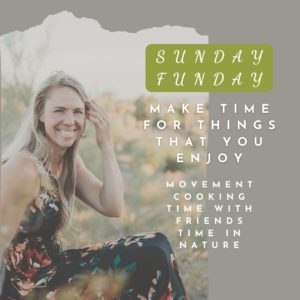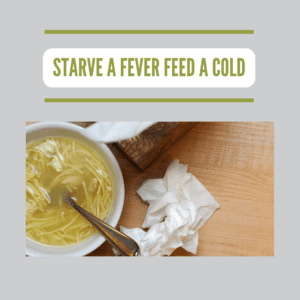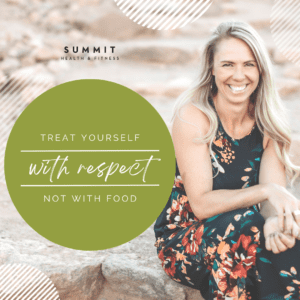
Make time for the things that you Enjoy!

Make time for the things that you Enjoy!

Just a simple post to share something that I love….Coffee & Sundays!
What do you love about Sundays?

Matcha Green tea is a great addition to any diet as a healthy way to manage cortisol levels.
Here is the recipe for my favorite at home version:
12 oz Oat milk Steamed
1 Scoop Collagen of choice
1 scoop Matcha of choice
10 Grams Maple Syrup
Whip or Swizzel (you know with the little coffee swizzeler) together and enjoy.
Savoring every sip and just feeling the stress melt away.

1- Herbal Tea – promotes warmth and calmness.
2- Dark Chocolate – rich in antioxidants and feels indulgent.
3- Whole Grains – Our bodies desire carbs to bring down cortisol so healthy whole grains help.
4- Avocado’s – Omegas keep the brain healthy and happy.
5 – Fatty Omega Rich fish – again happy brain better moods.
6- Matcha Green Tea – L-Theanine in green tea lowers cortisol levels significantly.
7- Nuts in moderation- Rich in b-vitamins these can be a great stress busting snack.
8- Citrus and Strawberries – High in vitamin C these can keep our immune system happy which in turn helps manage stress
9- Probiotics and fermented foods – Happy gut happy brain. It is all connected.
10 – Foods naturally high in Fiber – Again happy gut happy brain. Foods high in fiber keep our gut in tip top shape!

You have heard the wives tale “starve a cold feed a fever”. Well this really is not founded in any science. The goal should be to simply listen to your body. If you don’t feel like eating don’t and if you do, do. The most important thing that you SHOULD focus on is hydration. Hot – Cold it doesn’t matter. Just make sure to get in liquids!
Why do you need ‘plenty of fluids’ when you’re sick?
Hydration is always important, but it’s even more so when you have a cold, the flu. The main reason is, when you’re sick, you are probably neglecting your normal eating and drinking habits.
If you aren’t getting enough fluids, your body may have difficultly regulating its’ temperature, which can make you “feel” even worse.
Proper hydration can help the skin and cells act as a barrier to prevent bacteria from entering the body. It also can help decrease nasal irritation when coughing, sneezing and even just breathing.
So eat when and what you feel like. No need to force feed yourself but FOCUS ON HYDRATION and feel better soon!
Why “Eat Less, Move More” Isn’t Enough
Lauren Gunter | October 2, 2022
You’ve been told that in order to lose weight, you need to eat less and move more. And that is technically true. However, sometimes you’re doing all that you can to follow that simple rule, and nothing seems to be changing.
Even if you understand that way calorie intake and expenditure work, and you trust the science, it’s still really hard to execute for some reason.
On Sunday, you stock your fridge with you celery and prepped chicken, and grapes, you signed up for CrossFit, you scheduled food prep and workouts into your calendar like they’re an important work meeting. And yet, by Friday afternoon you have wilted spinach in your fridge, your gym owner is reaching out asking where you’ve been, and there’s not a prepped meal in sight.
After this cycle repeats itself week after week, it’s easy to feel frustrated and even a little hopeless. “What’s wrong with me?” we ask ourselves. First of all, nothing. Nothing is wrong with you. You do a lot of really great things like work, raise your family, keep your home clean, support your friends, and while these are all such great things, they definitely complicate the simplicity of “eat less, move more.”
We do a lot of things that actually decrease our ability or desire to move, and increase our desire to eat, especially calorie-dense (but not nutrient-dense) foods.
Job – stress, long hours
Family – complaining, constant need for support, can drain you
Sleep – bad sleeper? Waking up, can’t get to sleep
Partner – loves you the way you are and also loves Taco Bell
Take-out – it just saves SO much time
Shame – for eating poorly, so you continue to do it
Kids – you love them, but they’re energetic and take up a lot of energy, especially if child care isn’t consistent
Pain – if you have any kind of injury, moving more can feel good, but it can also increase your pain
Meds – using them to help boost mental health, but certain ones also increase your appetite
Every one of you is a complicated person with your own set of obstacles when it comes to “eat less, move more” and that’s why even though that is technically true, it’s not even close to enough. This is why coaching is so helpful, because we want to know the whole story so that we can give you a plan that will work FOR YOU.
If you’re not working with a coach right now, a good place to start is identifying what makes “eat less, move more” so difficult in the first place, and start taking action steps with those.
This can looks like:
This doesn’t really sound like nutritional advice, so why do those things matter? Because the outcomes make EVERYTHING easier, and when it’s easier, you’re more likely to do it.
Having that hard conversation is awkward, but if this person loves you and wants to support you, usually a compromise can be reached. Instead of eating out 5 times per week, decrease it to 3. They still get to eat out, you get two more healthy meals. Being vulnerable is what deters us from doing this, but we often feel more loved and support after. Prioritising your health is NOT selfish.
Getting some of those anxious thoughts out of your head, even if it’s just temporary, can help you to relax a little more, get better sleep, and have the energy to make better choices like eating at home, or have more energy to move, like walking to work.
Keeping a food journal can help us recognize triggers. Every time I hit a drive thru unplanned, it happens to fall on a day where I had to work late and I leave the office hangry and tired. I feel shame for eating it, and also for not being home with my family for dinner. Once you KNOW this, you can start planning to change it. Spending some extra time with your family in the morning when you know it’s going to be a long day, or bringing a protein bar with you for the car ride home so that your hungriness doesn’t take over and you’re able to think through your dinner choice and eat slowly can help save you hours of stress and hundreds of calories.
The changes are small at first, but over time, you’re able to eat a little cleaner and move a little more, AND most importantly, feel better about the choices you’re making. Your body will begin responding to these changes, and the emotional and physical health together are what lead to those bigger changes we’re all chasing.
Eat less and move more does still work. But we are all complex, and it takes more than you hitting your macros or going to CrossFit every day to see the changes you are looking for. Look behind your difficulty with eating right or working out consistently. How are you managing your stress? How are you sleeping? What are you doing for recovery? It might actually be these things that are preventing your progress.
It may seem like this will prolong the process, but caring for your mental health, sleep, and recovery give you the fuel you need to actually follow through on those nutrition and fitness goals you have.
https://www.instagram.com/p/CkPZU_nJ1G5/
This concept can be tough. Food Can feel like such a reward or gift.
Then you feel the need to celebrate every memory, every moment, every event and make food the focus.
Making food part of our events and memories is absolutely OK but thinking that it always has to be a treat, the reward or the gift is not.
Just a little food for thought on this Monday.

Take time to slow down and enjoy the journey
I know we all have goals and trust me ….no one is more in a hurry to get there than me. If you know me you know I only know one speed. FULL SPEED! However, taking time to enjoy the process is important! It also helps to make the results sustainable!
What helps you to slow down and enjoy the journey?
“Unrealistic dreams are the ones that take you places!” – Analise Cleopatra

It’s Sunday. Take some time today to DREAM. What is something that is a little outlandish? Something big and scary. I know, it can be awkward to dream big but it can be so fun too! It’s ok. Let’s just imagine – play with it and have fun! Happy Sunday Fam!

Coach Lauren shared these valuable tips with our Summit Health Tribe in her Live Sundays with Summit Health Tribe this last week. If you would like to join our closed support group on Facebook let me know! I’ll add you to the group. Requirements are: Be supportive! Share when possible and engage and encourage!